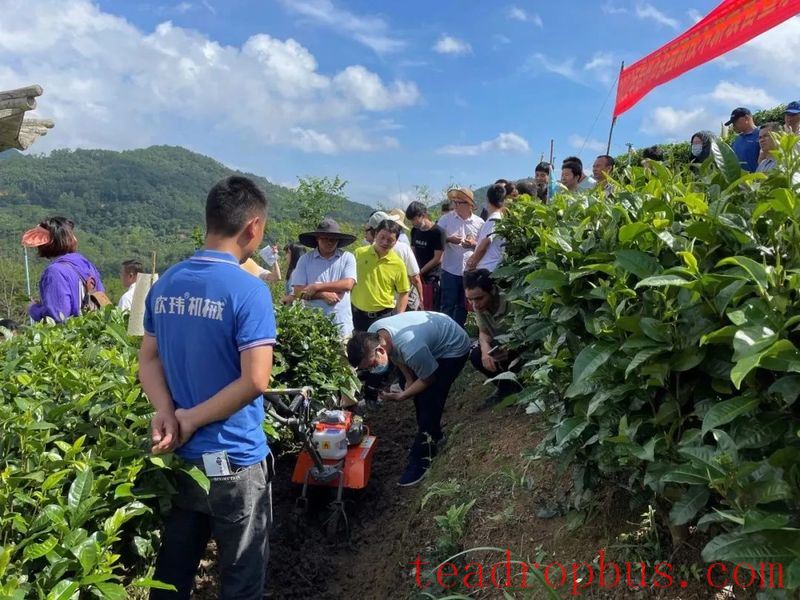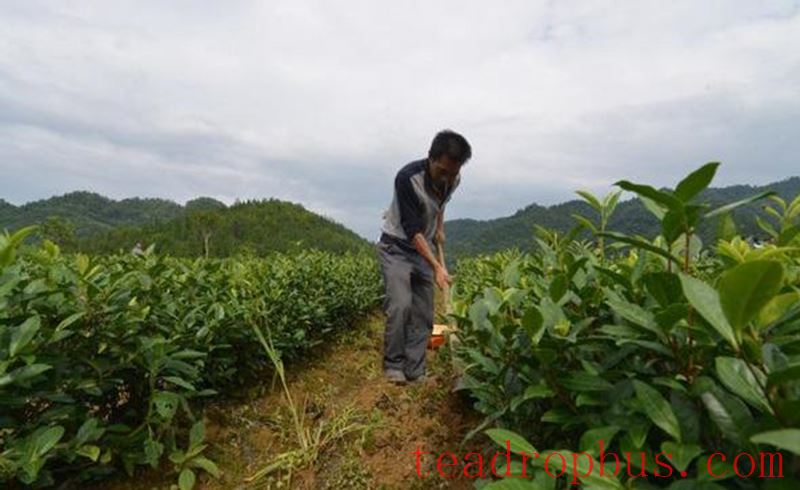Cultivation in Tea gardens is a critical component of tea production and one of the traditional methods for increasing yields used by farmers in tea-growing regions across China. Depending on the time, purpose, and requirements, cultivation can be divided into cultivation during the production season and cultivation outside the production season. As the Spring Tea harvesting period approaches in southern China, selecting an appropriate cultivation system can have a direct impact on both the yield and quality of the tea garden.
Why cultivate during the production season?
During the production season, the above-ground parts of the tea plants are in a vigorous growth and development phase, with buds and leaves constantly differentiating and new shoots continuously growing and being harvested. This requires the underground parts to supply abundant water and nutrients consistently. However, this period often coincides with the lush growth of weeds in the tea garden, which consume large amounts of water and nutrients. It is also the season when soil evaporation and plant transpiration are at their highest. Additionally, during the production season, soil compaction and structural damage occur due to rainfall and continuous harvesting activities in the tea garden, which adversely affects the growth of tea plants.
Therefore, cultivation is carried out in tea gardens to loosen the soil, improve its permeability, remove weeds promptly, reduce the consumption of nutrients and water in the soil, and enhance the soil's ability to retain moisture. Cultivation during the production season should generally involve intermediate tillage (up to 15 cm deep) or light hoeing (around 5 cm deep). The frequency of tilling and hoeing depends mainly on the prevalence of weeds, the degree of soil compaction, and rainfall conditions. Typically, intermediate tillage before the spring harvest, and light hoeing after the spring and summer harvests (three times in total) are indispensable, and these are often combined with fertilization. The specific number of cultivation events should be determined based on actual conditions, varying according to the trees and the site.

Intermediate Tillage Before Spring Harvest
Intermediate tillage before the spring harvest is a crucial measure for boosting the spring tea yield. After several months of rain and snow, the soil becomes compacted and the soil temperature is low. Cultivating at this time can loosen the soil, remove early spring weeds, and make the soil more porous and prone to drying on the surface, allowing the soil temperature to rise quickly and promoting earlier sprouting of spring tea. Since the main purpose of this tillage is to conserve rainwater and increase soil temperature, the depth can be slightly deeper, usually 10-15 cm. The saying “digging into the skin of the spring mountain” indicates that it should not be too deep, as this could damage the roots and hinder their absorption in spring. In addition, this tillage should be combined with the application of sprout-stimulating fertilizer, leveling the ground between rows, and clearing drainage ditches. Intermediate tillage before the spring harvest is typically combined with the application of sprout-stimulating fertilizer, ideally 20-30 days before the start of the spring harvest. The exact suitable time for intermediate tillage may vary by region.

Light Hoeing After Spring Harvest
This light hoeing is commonly conducted in mid-to-late May, following the end of the spring harvest in southern China. At this time, temperatures are higher, and there is more rainfall, which is also when summer-flowering vegetation starts to grow vigorously. Additionally, the soil becomes compacted from foot traffic during the spring harvest, making it difficult for rainwater to penetrate, so timely hoeing is necessary. The depth is generally shallower than that of intermediate tillage before the spring harvest, around 10 cm. Also, mid-to-late May is the time for applying top-dressing fertilizer after the spring harvest, and most producers scatter the fertilizer on the surface. Conducting the light hoeing after applying the fertilizer is preferable as it helps incorporate the surface-applied fast-acting fertilizer into the soil layer.
Light Hoeing After Summer Harvest
This light hoeing is performed immediately after the summer harvest, usually in mid-July. At this time, the weather is hot, summer weeds grow vigorously, and soil moisture evaporates rapidly, while the climate is relatively dry. To break capillary action and reduce evaporation, and to eliminate weeds, light hoeing must be done promptly, at a depth of about 7-8 cm. Special attention should be paid to the weather conditions at the time; if there is persistent high temperature and drought, hoeing should not be done.

In addition to the three aforementioned hoeing events, given the long duration of the tea production season, one or two additional light hoeings should be added based on the occurrence of weeds, especially in August and September when temperatures are high and many weeds flower and set seeds. These hoeings should be done before the flowering of autumn vegetation to thoroughly eliminate weeds and reduce the incidence of weeds the following year. In young tea gardens, where tea plants have less canopy coverage and there are larger gaps between rows, weeds tend to grow easily, and young tea plants are vulnerable to weed competition. Therefore, the number of hoeing events should be greater in young gardens than in mature gardens, otherwise, the risk of weed infestation and adverse effects on the growth of young tea plants increases.
Text: Wei Yunfei